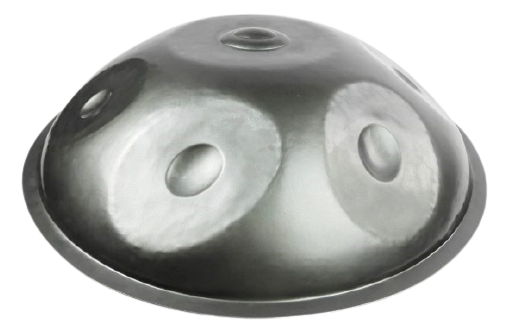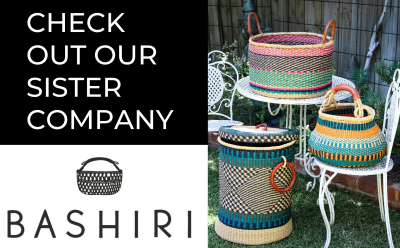Tuning
This is probably the most important aspect of choosing a handpan. Is the instrument in tune? Most of the time it’s difficult to tell whether a handpan is absolutely in tune to the cent, but that is not as important as whether it sounds right to you.
The scale is an important consideration: Do you want something that will be easy to play alongside other instruments? Consider a common tuning with few sharps, such as any natural minor tuning.
Want to play alongside a guitar? a handpan tuned to the key of E will work well.
If your performance setting is more flexible, you can explore more complex tunings such as Akebono.
If you have an understanding of music theory and would like to get more tehnical, you can investigate further to see if the harmonics are well tuned:
When you hit a note, the sound is actually made up of three notes sounding together:
1: The Fundamental – this is the note that we are playing. Say for example the note C.
2: The Octave – this would be the C above the fundamental.
3: The Fifth above the Octave – this would be the G above the octave.
So in our example, when we play the C, we actually hear a combination of the C, the C one octave up, and the G above that. The combination of these three sounds is what gives the handpan its rich and complex character. If the Octave and the Fifth are well tuned to the Fundamental, the note will sound stable and clear.

Timbre
The timbre (pronounced TAM-ber) can also be described as the sound quality or sound colour.
Another way to think of timbre is to imagine a piano and a guitar playing the exact same note at the same volume. Even though they’re playing the same notes, they sound different. That difference in sound quality is the timbre.
This is one of the more subjective qualities, so it can come down to your preference.
Some handpans sound dark and gloomy, others are bright and clear. You may like to hear the ding of metal, or you may prefer to hear the warmth of the note unaccompanied.
Balance
While timbre relates to how the instrument sounds as a whole, balance refers to how the timbres of each note work with each other. Do all the notes have the same consistency, volume, and projection? If you climb the scale of your handpan, you should find that the notes shouldn’t vary too much in sound quality. However, some tunings can actually benefit from small imbalances where one or more notes stand out a bit more from the rest. This can give the handpan a bit of character.


Sustain
A good handpan, by its nature, tends to have a lot of sustain.
This means that when you play a note correctly, it will ring for quite some time before fading away. Most people love the sound of a long sustain, but some people prefer the sound to die away a little quicker so that overlapping notes don’t muddle together too much.
This choice, like timbre, is quite subjective and comes down to your playing style. If you have a dynamic and percussive playing style, you may want a handpan with less sustain. If you want to play slowly and meditatively, you may find a longer sustain more appealing.
Crosstalk
This is another important criterion for choosing a handpan.
Crosstalk is what happens when you play one note and its resonance causes other notes to sound. For the most part, a good handpan should have very little crosstalk between most notes. You don’t want to play a D and have a D sharp activate in disharmony. However, certain groups of notes sound good when they activate one another due to what is known as sympathetic resonance. This is getting a little bit into music theory, but if you play a low C and it activates a G, which is a perfect fifth, a harmonious chord is created and it sounds good. In short, a little bit of crosstalk between certain notes is fine (and unavoidable), but again this will come down to your preference.
Dynamic Range
The dynamic range of a handpan is the difference between how soft or loud it can be played and still sound clear. All handpans have a threshold where if you play a note too hard, it saturates. That is, it will become distorted and overly metallic, like a pot being thrown down a flight of stairs. A good handpan will let you play quietly and hear the notes clearly, and also let you play a little harder without saturating.
Our handpans range
Primo Series Range
Our Primo Series Handpans are hand-hammered from first grade pressed steel, giving long sustain and beautiful harmonies. We’ve worked hard to get these pans sounding in perfect pitch so you’ll find your own melody super-fast! Available in a range of different tunings including easy to play moody minor scales and more exotic mystical scales, this is a great (and affordable) place to start you handpan journey.
Master Series Range
Our Master Series Handpans are made from first grade pressed iron and have a larger volume, to help their resonance. Extra time is taken to tune higher sympathetic frequencies, resulting in a more harmonically balanced instrument. Notes tend to be purer in pitch and more centralised with slightly less sustain and less crosstalk from adjoining notes. If you’re a musical aficionado with a sharp ear or someone show appreciates the finer things in life then our Master Series range will hit the spot.
Mini Handpans
Inspired by the European hang drum, our Mini Handpans have 7 distinct note panels and ship with a protective backpack style bag. Sounds are crisp, bright and easy to find on this compact version perfect for portability and travel

